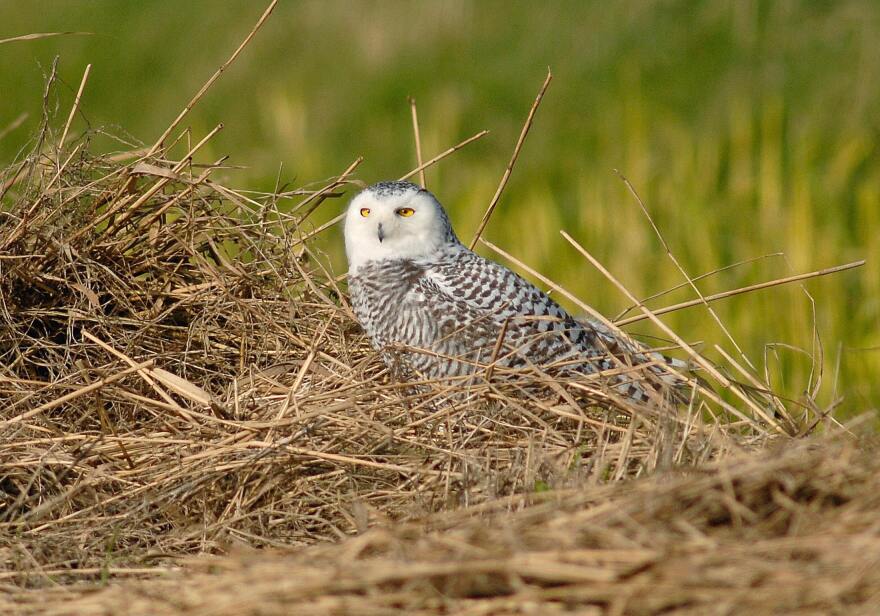With our free press under threat and federal funding for public media gone, your support matters more than ever. Help keep the LAist newsroom strong, become a monthly member or increase your support today.
1 In 5 UN-Tracked Migratory Species At Risk Of Extinction

One in five species of migratory birds, fish, reptiles, mammals, and insects tracked by the United Nations is threatened with extinction due to escalating environmental pressures and overexploitation by humans, according to a recent landmark report.
The U.N. report, “State of the World’s Migratory Species,” represents the first-ever comprehensive assessment of the conservation status and population trends of species whose members “cyclically and predictably cross one or more national jurisdictional boundaries.” Some familiar examples include green turtles, snowy owls, and Monarch butterflies.
The U.N. Convention on the Conservation of Migratory Species of Wild Animals, or CMS, tracks more than 1,180 species that are already endangered or that would “significantly benefit” from being protected under an international agreement. The report finds that 44 percent of these species are experiencing population declines and 22 percent are threatened with extinction. Its release coincides with the beginning of a high-profile U.N. wildlife conservation conference in Samarkand, Uzbekistan, where experts are calling for greater international collaboration to combat climate change, habitat loss, pollution, and excessive animal exploitation, such as hunting and fishing.
“Conservation of migratory species is extremely difficult because they cross nations, continents, even hemispheres,” Amanda Rodwald, director of the Center for Avian Population Studies at the Cornell Lab of Ornithology, told Grist. “That requires a lot of coordination among different countries … and thinking across geopolitical boundaries.”
The report reinforces previous research on the deteriorating health of wild animal species worldwide, almost entirely due to human activities like agriculture, hunting, and fishing, as well as the pressures of climate change. In 2019, a separate U.N. panel reported that an “unprecedented” 1 million species globally were threatened with extinction. A subsequent study from late last year doubled that number to 2 million by taking into account a greater number of insects, which make up the majority of species worldwide.
Migratory species are particularly vulnerable to anthropogenic pressures. Their migratory journeys require large, intact tracts of land, water, or airspace — and these tracts are getting harder to come by, whether because of dams, boat traffic, roads, skyscrapers, or other development. According to the CMS report, 75 percent of listed migratory species are affected by lost, degraded, or fragmented habitats, which can prevent them from finding mating partners or food.
A previous report of the CMS, published during the U.N.’s annual climate conference in Dubai last December, highlighted how climate change is affecting the timing of some species’ migrations and making it harder for them to reproduce and survive. As climate change progresses, other studies suggest that fragmented landscapes will preclude species from moving to cooler areas where they are more likely to survive.
The most pervasive threat to migratory species, however, is overexploitation, which the new report says is affecting three-quarters of the species it tracks. It says humans are intentionally — and often illegally — hunting too many wild birds and terrestrial mammals for their populations to be able to recover. They’re also unintentionally killing too many marine species as bycatch — fish, dolphins, and other non-targeted animals that get caught in the industrial fishing process. Since the 1970s, populations of migratory fish species have declined by 90 percent, and nearly every fish species the CMS tracks now faces a “high risk of extinction.”

The decline of migratory species also has severe implications for humans. As noted in the new report, migratory species provide critical “ecosystem services” that benefit humans by dispersing seeds and pollinating food crops that people eat, as well as supporting livelihoods for fishers and farmers and maintaining healthy ecosystems. “If environments aren’t healthy for other species, then they’re unlikely to be healthy for people,” Rodewald said.
Migratory species can also directly mitigate climate change. Large migratory animals — like humpback whales, for example — sequester carbon in their bodies and then transfer it into long-term storage in the soil or seabed after they die. Other migratory animals preserve carbon storage in grasslands by walking on and compacting the snow or soil, or producing nutrient-rich feces that keep plants healthy and prevent erosion.
To reverse migratory species’ decline, the CMS lists more than two dozen priority actions for policymakers. These include cracking down on illegal and unsustainable hunting, fishing, and bycatch; creating and protecting more natural habitats; and phasing out toxic pollution from sources like plastics, pesticides, and lead weights used in fishing. The report also recommends global coordination to limit light and noise pollution, which kill millions of birds and marine animals every year.

Crucially, many of the interventions recommended by the CMS would have co-benefits for the climate. Restoring mangrove ecosystems, for instance, could support migratory green turtles and dugongs while also pulling carbon out of the atmosphere and storing it into biomass. And stopping destructive overfishing practices can protect fish while helping to preserve the ocean’s crucial role as a carbon sink.
The U.N.’s conservation conference in Uzbekistan began on Monday and is scheduled to end on Saturday. Delegates are expected to review more specific action plans for a number of particularly vulnerable migratory species, and to consider new species for inclusion under the CMS — the report says there are nearly 400 “threatened and near-threatened” species that could benefit from being listed. Nonbinding global guidelines for light pollution, under development since last year, are also expected to be presented for adoption.







